Jane Magnolia is known for beautiful Spring flowers, but what happens to a Jane Magnolia tree in Fall? Does it have any color? Here are the answers!
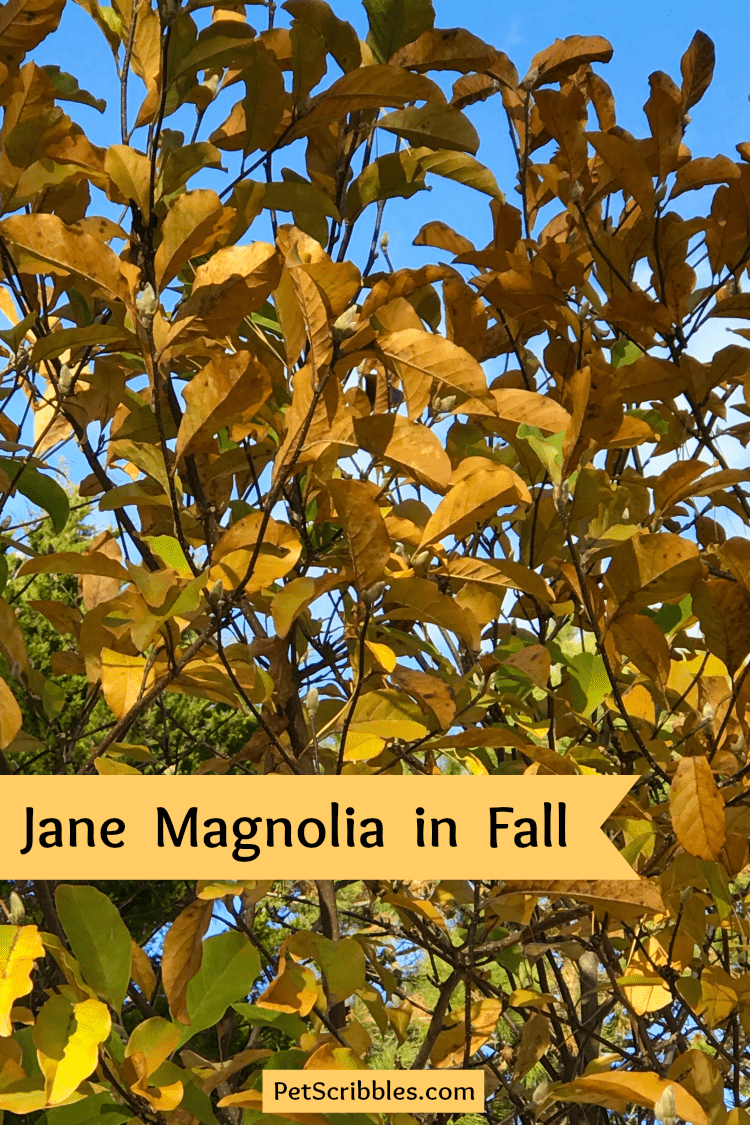
Thanks to one of my readers here, for asking me about the Jane Magnolia tree in Fall.
Thanks so much for your posts, especially on the Magnolia Jane. What does this plant do in the Fall? Is it particularly pretty?
~Kathleen
A great question to answer in depth, so special thanks to Kathleen for asking me about this!
This article takes a close look at the leaf color and the already-developing fuzzy flower buds.
Jane Magnolia or Magnolia Jane?
I have seen both versions of the name used, however both the Arbor Day Foundation — as well as the U.S. National Arboretum which developed this magnolia hybrid — use the name Jane Magnolia.
I have always said Magnolia Jane, but since learning this fact will try and switch the words around in my head!
Jane Magnolia is a Spring-flowering tree.
Everyone who has ever planted a Jane Magnolia on their property has done so specifically for the beautiful Spring flowers.
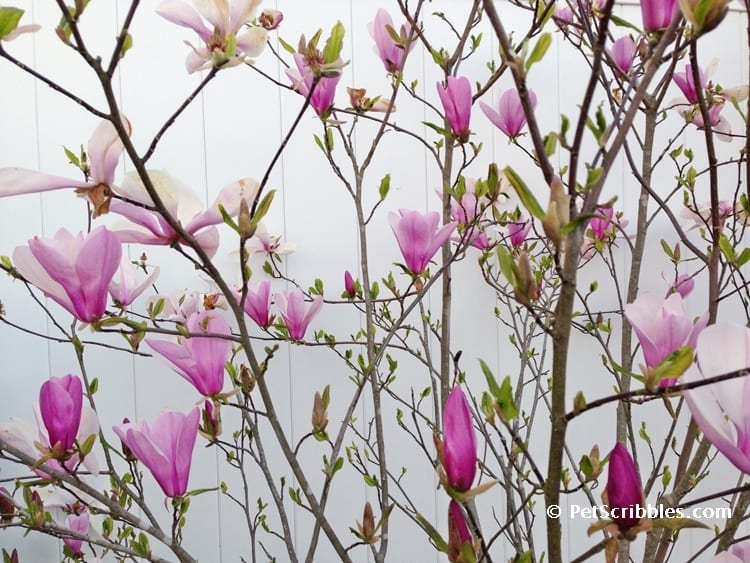
Spring is the time that Jane Magnolia’s truly shine. I’ve written a popular post about it here: Magnolia Jane: you absolutely need this stunning flowering tree!
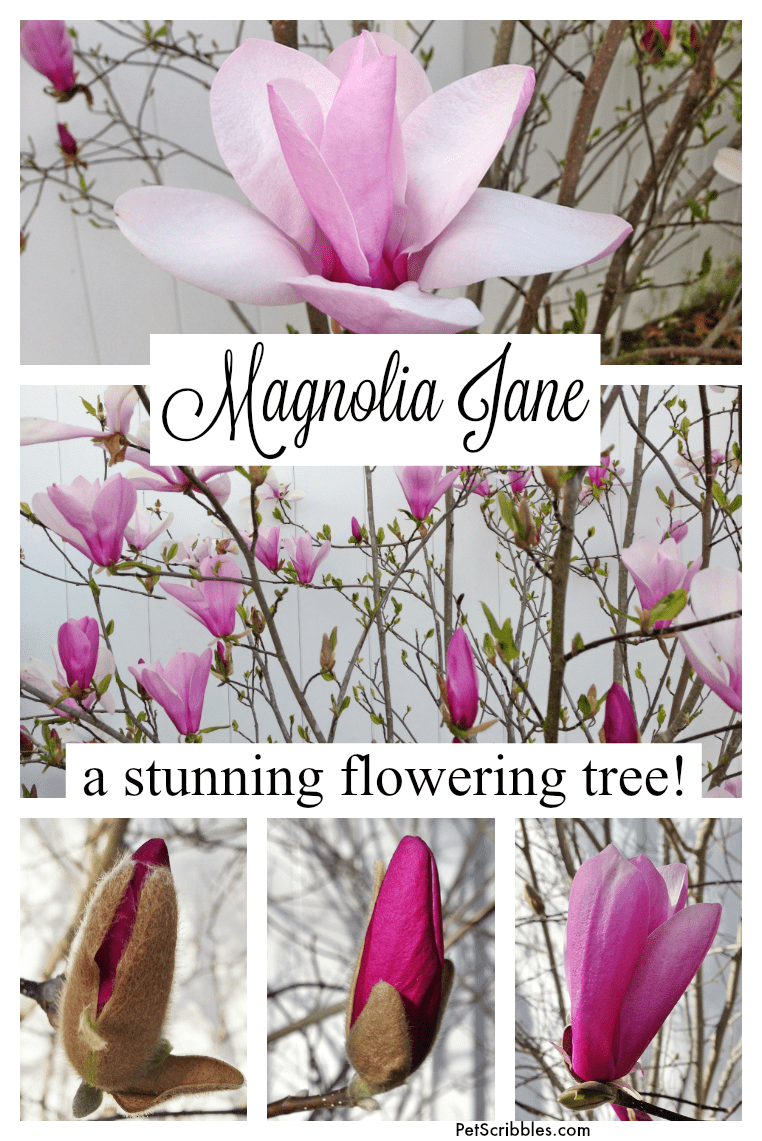
But what happens to Jane Magnolia trees after the Spring flowers are gone?
Jane Magnolias are dependable green trees in Summer, with occasional flowers popping up here or there.
That’s the short summary! You can read more here: Magnolia Jane in the Summer.
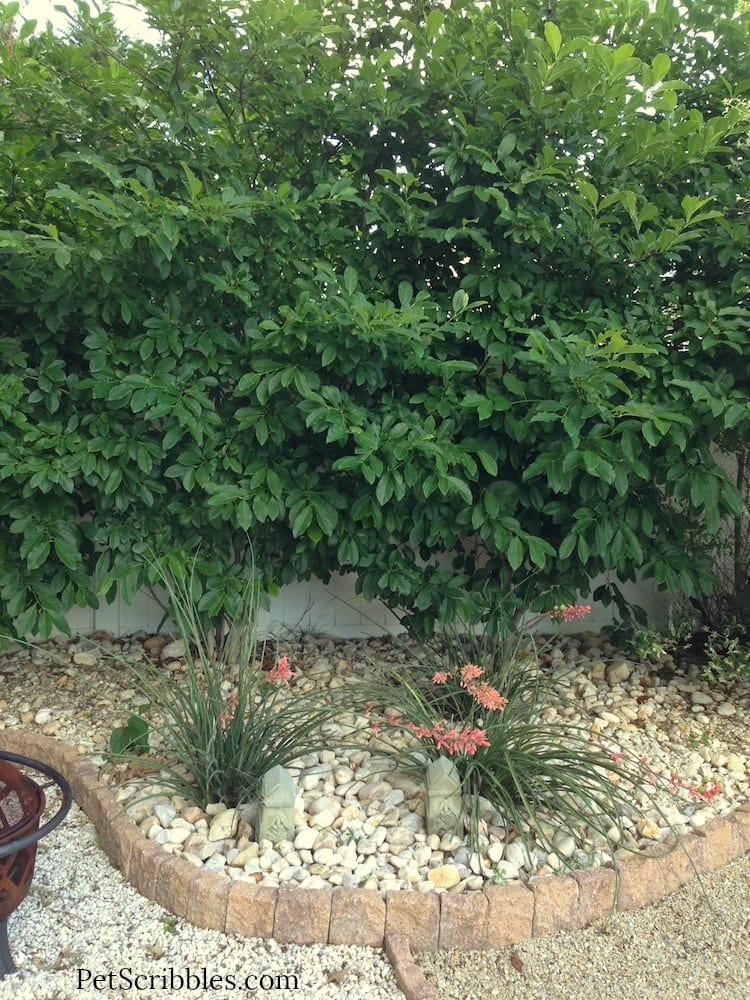
The plants in front of the Jane Magnolias are called Red Yuccas or False Yuccas. You can read my post about them here: Red Yucca: a gorgeous long-blooming perennial!
But what about the Jane Magnolia Tree in Fall?
Well, let’s just say Jane Magnolia isn’t known for its Fall leaf color. And most people will tell you that Jane Magnolia’s Fall color isn’t much of anything.
But I’m not “most people” which means I actually like these trees in the Fall.
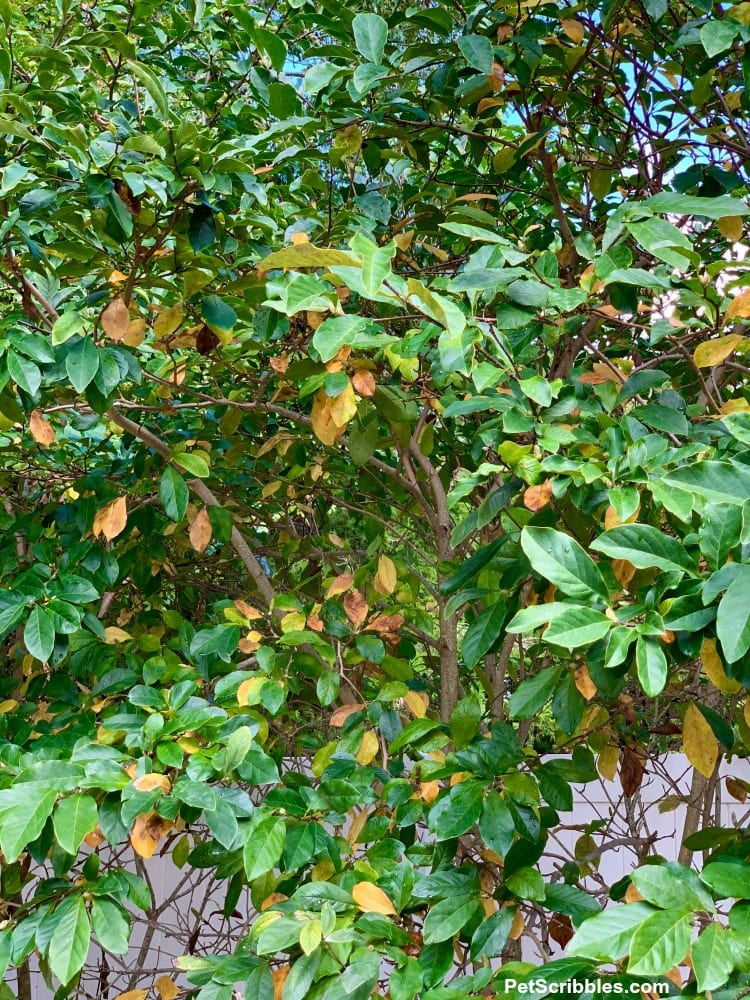
The leaf color doesn’t change early on like with River Birches, for example. (Each year I want to glue the River Birch leaves back on, as they start falling off in late August.)
Our Jane Magnolias were still green in mid-October this year.
Below is a picture of our Limelight Hydrangea Tree taken on October 14. The Magnolias are in the background:
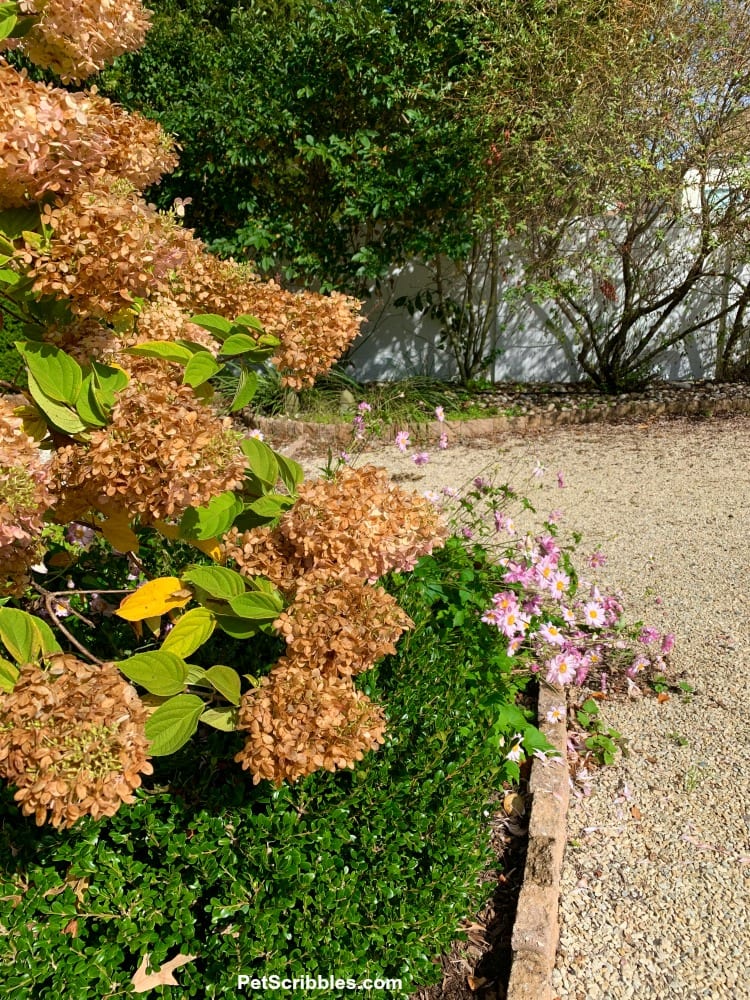
The pink flowers above are Japanese Anemone Party Dress, and bloom profusely late-Summer through the Fall. You can read my post about them here: Japanese Anemone Party Dress is my favorite Fall flower!
Jane Magnolia’s Fall leaf color is golden yellow.
Here in Zone 7, the leaves begin to change in mid-October. The deep green color turns to golden yellow before turning brown and dropping off the tree.
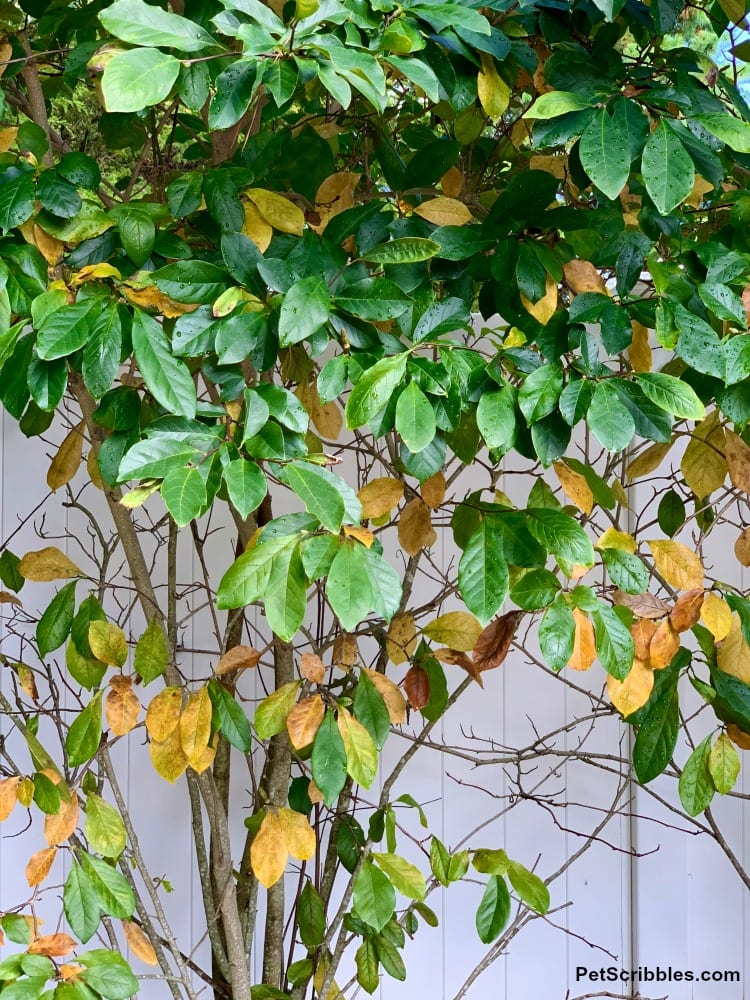
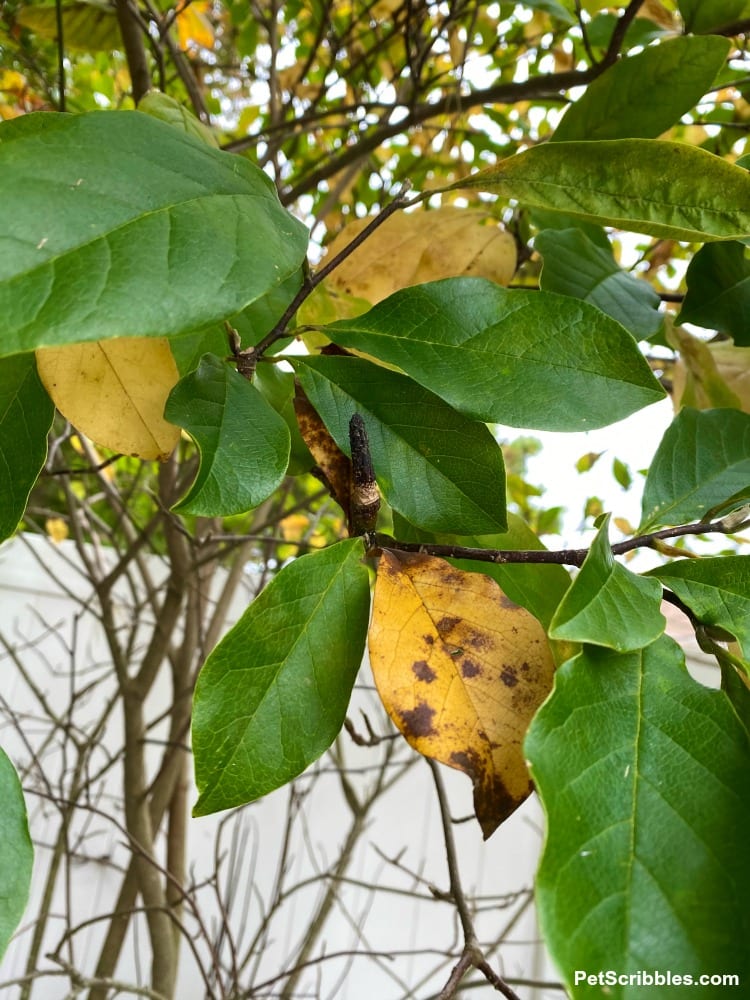
The green and yellow colors mixed together look great on Jane Magnolias, whether the sky is blue or gray.
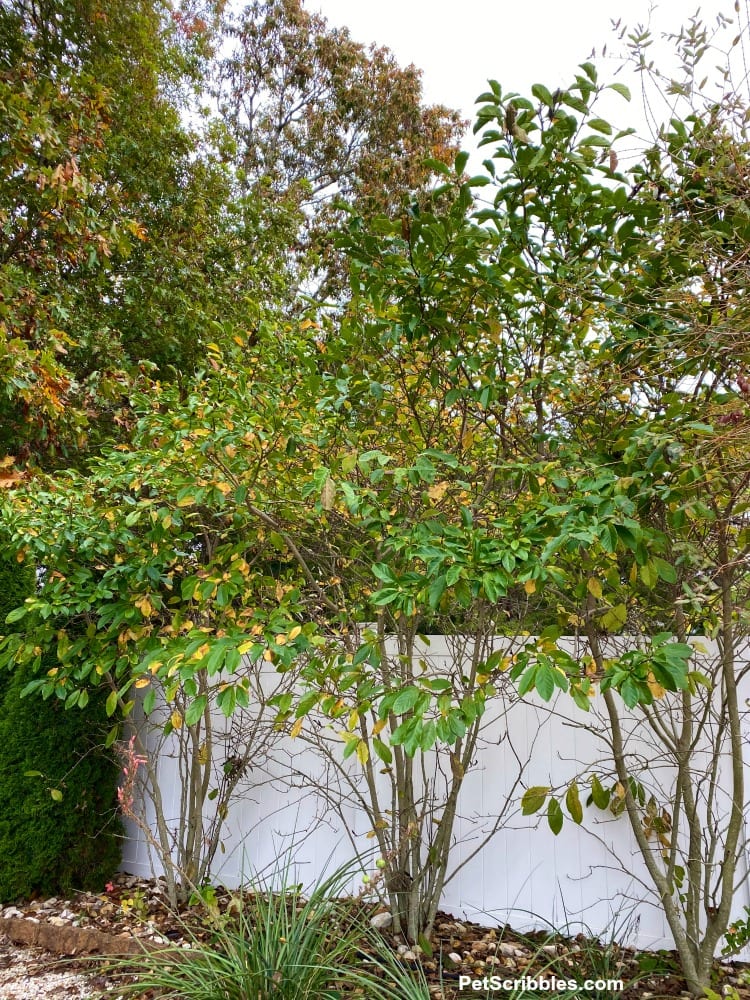
By the end of November, our Jane Magnolia trees become completely yellow — even though it’s usually for a very brief period.
I just love how they look:
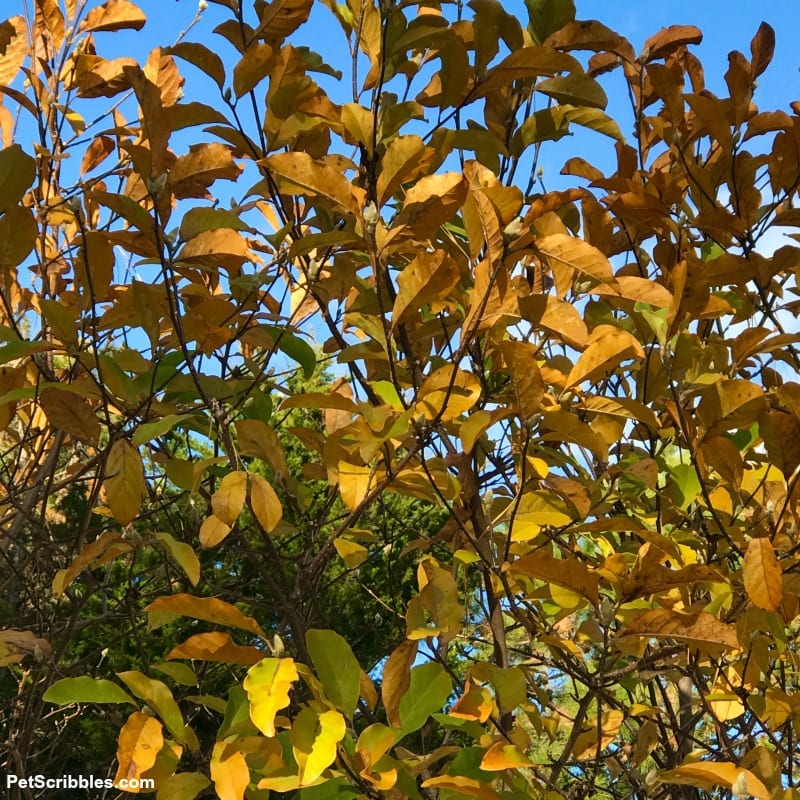
Here’s an image I took last year from our upstairs window.
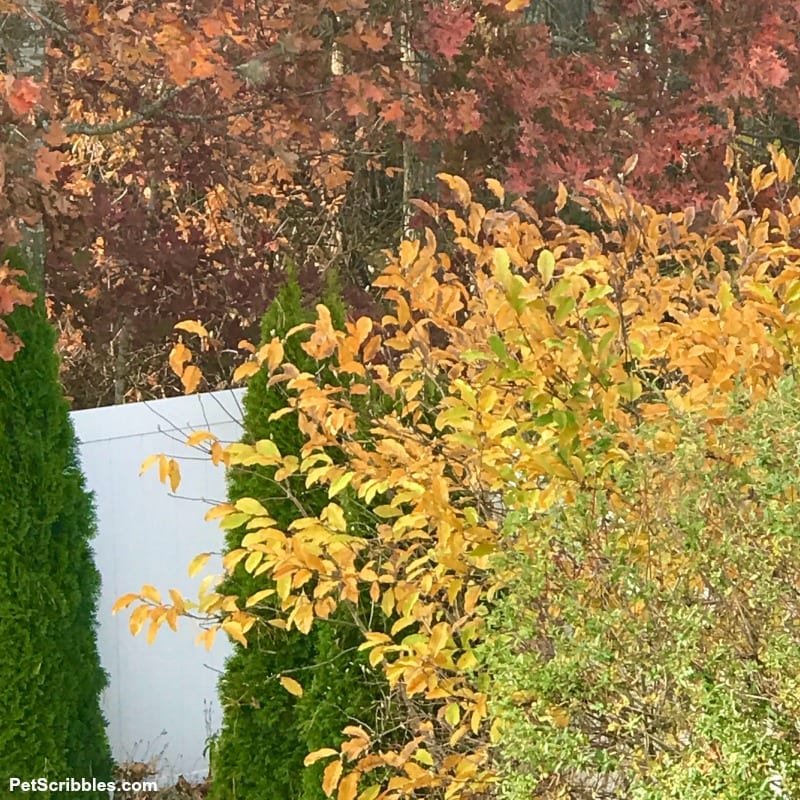
You can see how pretty the leaves are against the Aborvitaes and Oak trees behind them. In front you see the tops of our Dappled Willow shrubs.
Fuzzy flower buds are forming on Jane Magnolia!
During the Fall season, the fuzzy flower buds are already forming on Jane Magnolia trees.
Important to note: You never need to prune these trees. If you do, please prune them immediately after the Spring flowers are finished. Otherwise you will end up removing the flower buds.
Look closely and you will often see the buds hidden among the green leaves even before there’s any leaf color change.
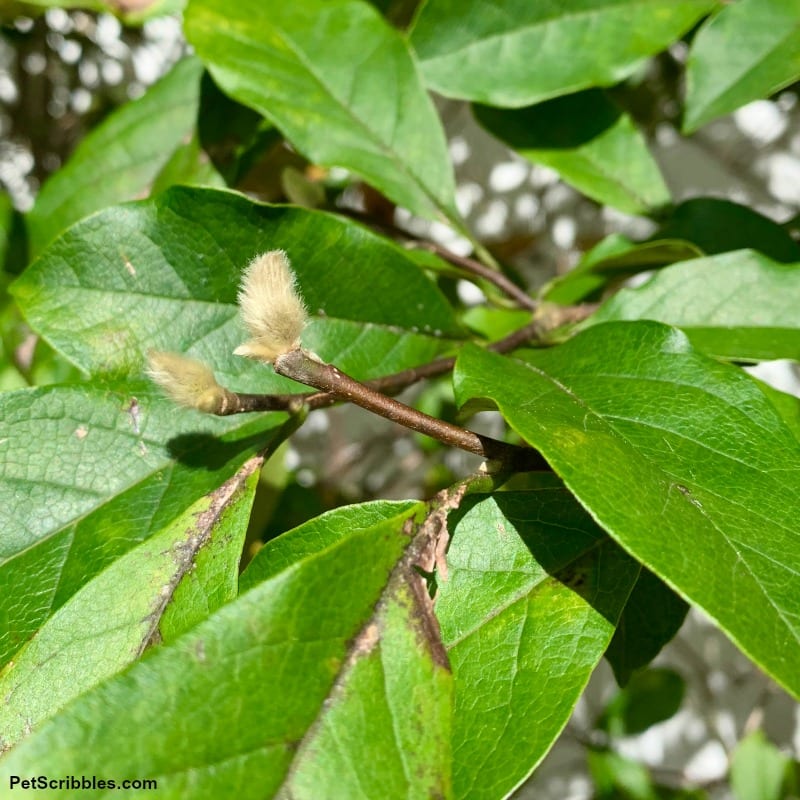
It’s a ritual for me every year to look for these buds — which look so much like pussy willow catkins.
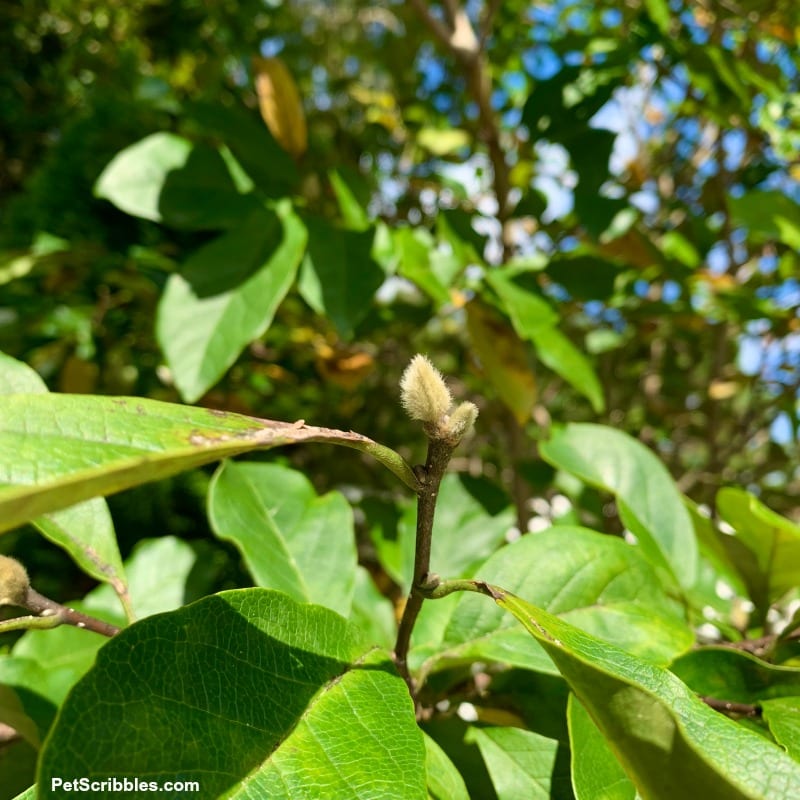
First you see one or two, then more begin to appear all over the trees.
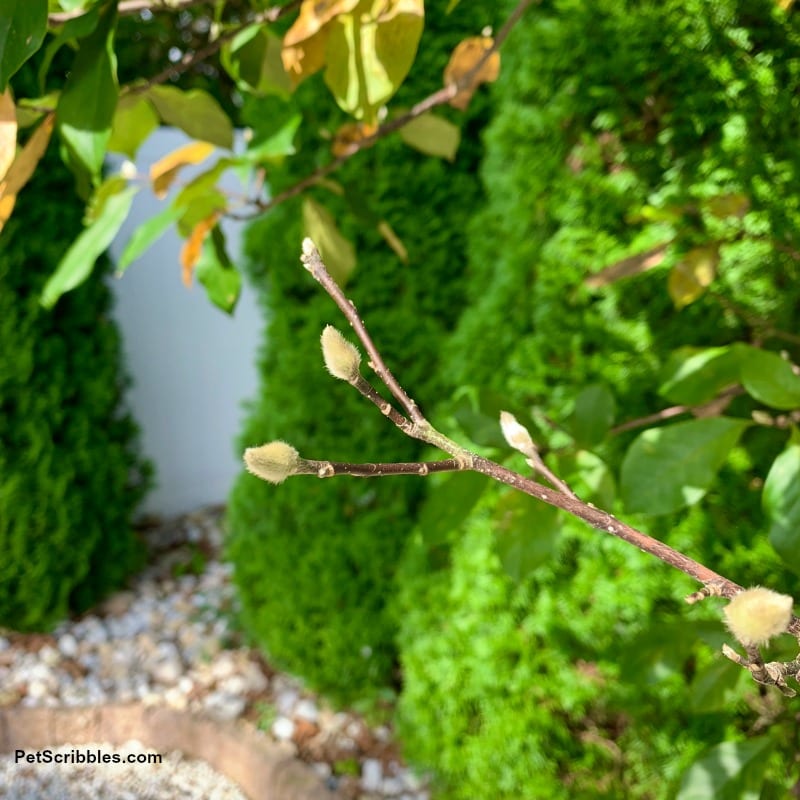
What happens in December?
Once the leaves have fallen off the Jane Magnolia trees, you can easily see the fuzzy flower buds. Some have grown larger, while others continue to develop.
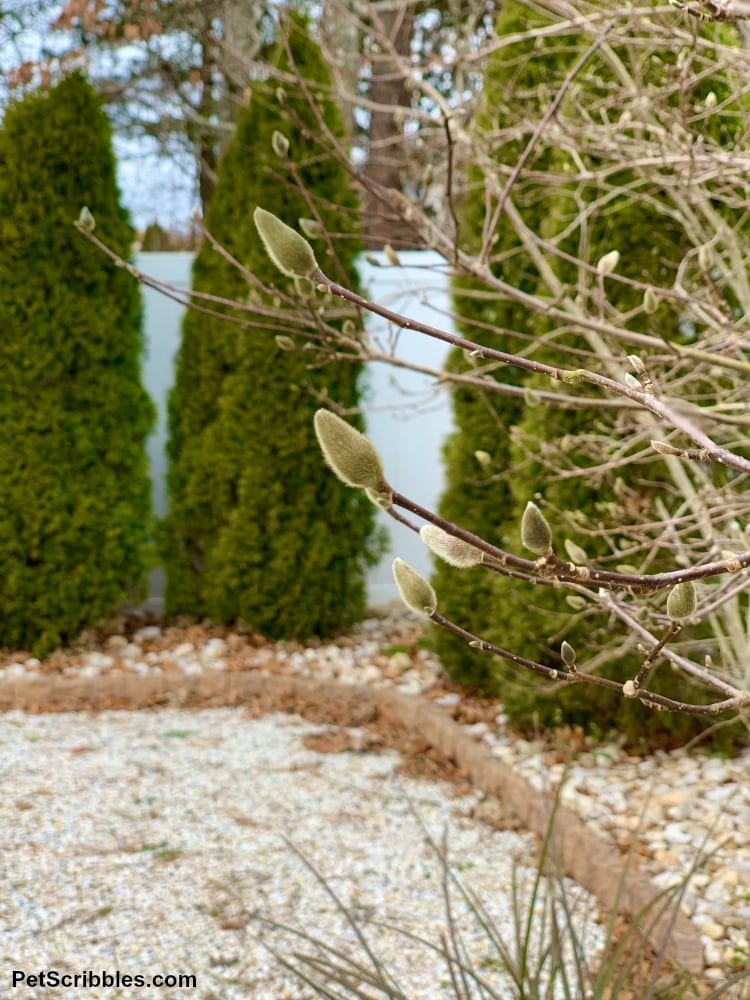
During the Winter season is when I enjoy pretending that Jane Magnolia trees are actually Pussy Willow trees!
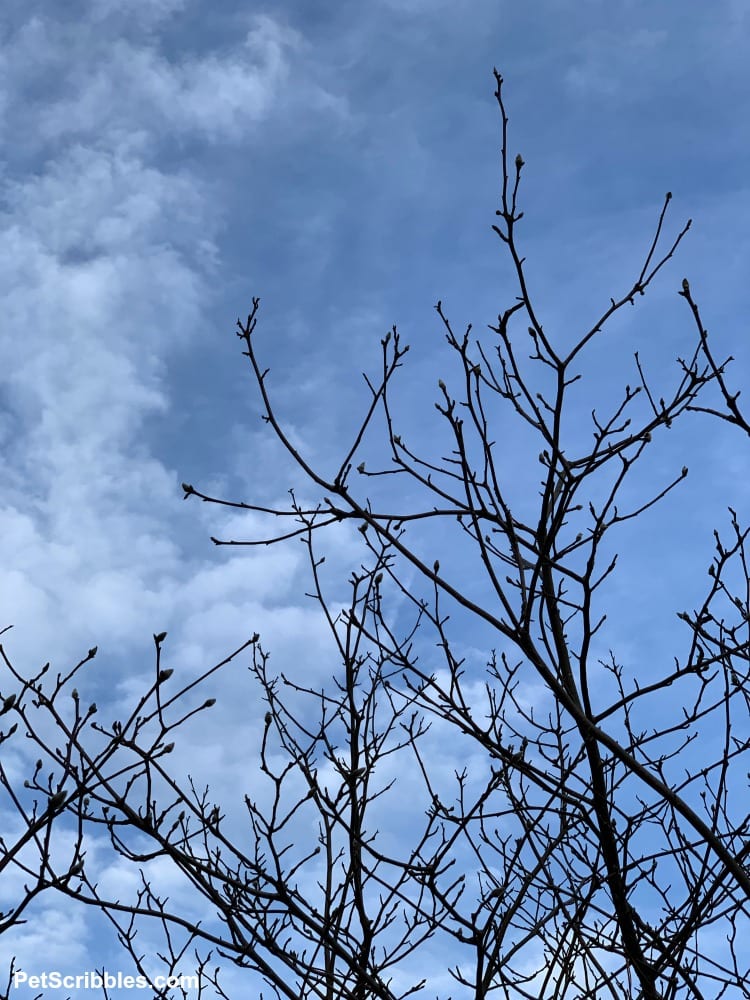
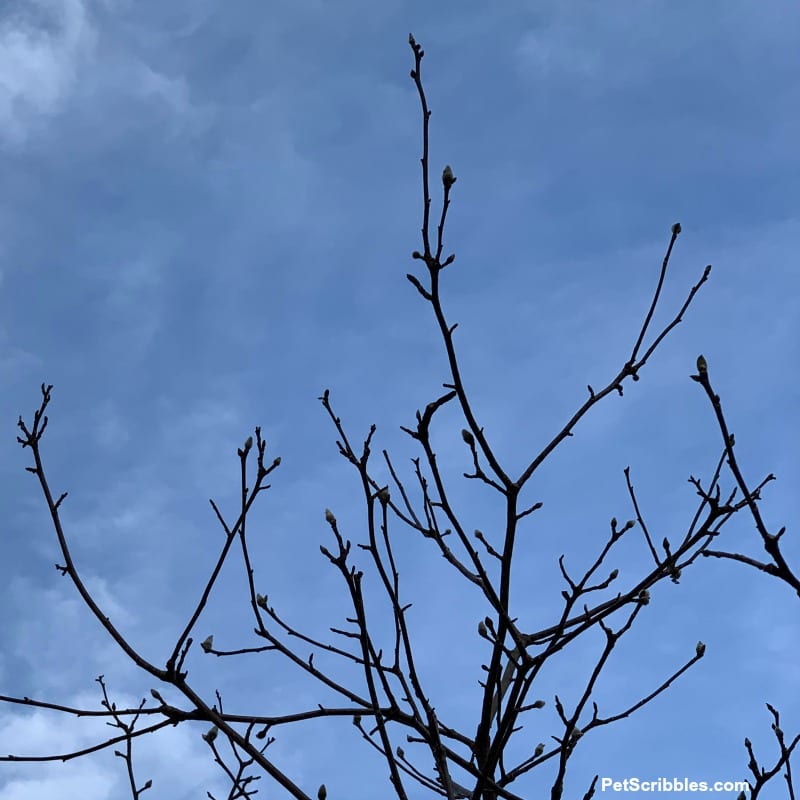
I hope you can appreciate the Jane Magnolia tree in Fall like I do. I definitely think of this tree as having year-round interest.
Limelight Hydrangea Tree in the Fall
To see what a Limelight Hydrangea Tree looks like in the Fall, click on my post here: Limelight Hydrangea Tree Fall Color.
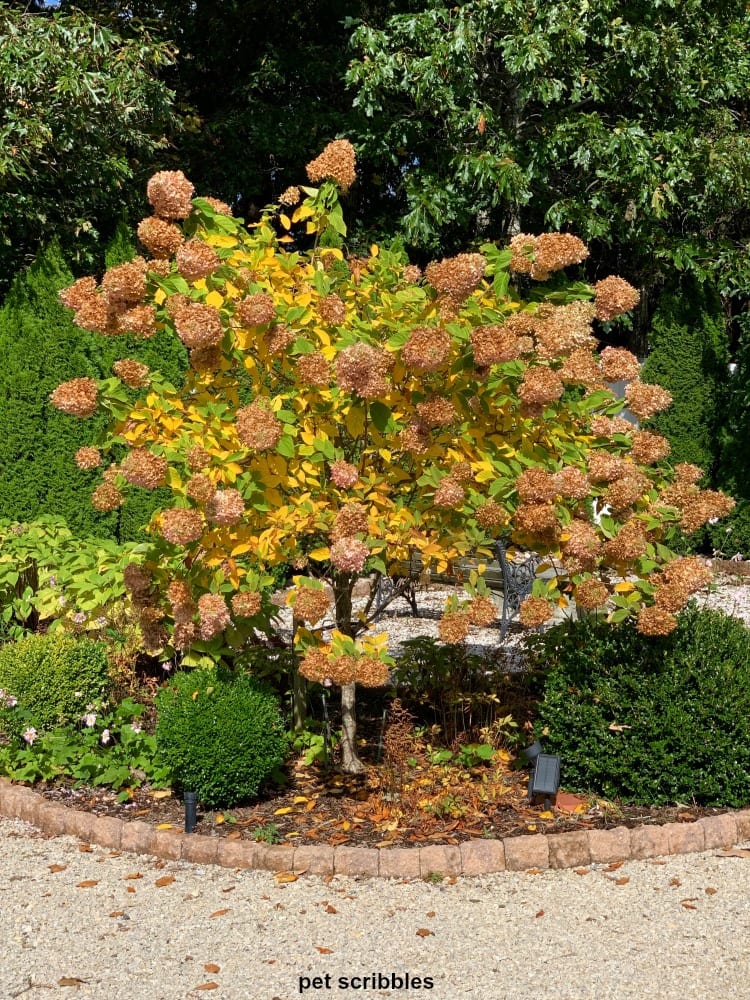
Happy gardening!

Leave a Reply